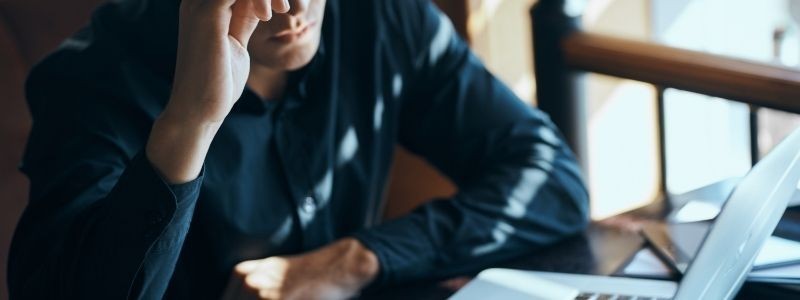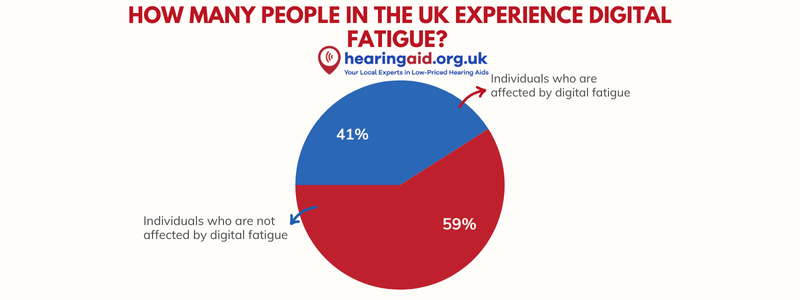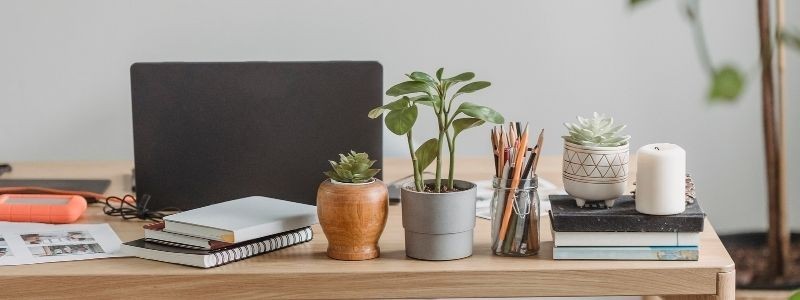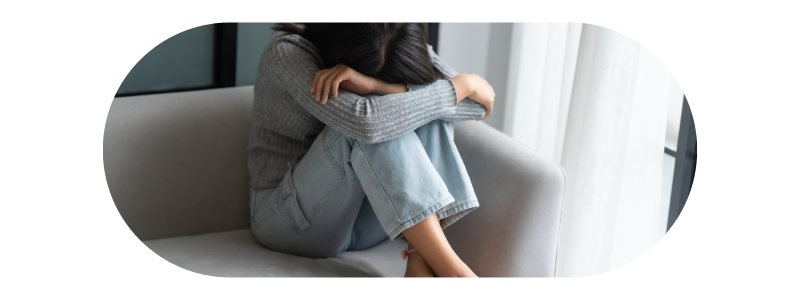
Head of Online Medical Content

Audiology Expert

Digital Fatigue, Listening Fatigue and Hearing Loss
How to cope with digital fatigue and listening fatigue with hearing loss
Digital fatigue and hearing loss | Causes | Symptoms | Statistics | How to avoid digital fatigue | Useful tips
Last Hearing Aid UK Update:
We are in digital overload times
Digital and listening fatigue, also known as "digital overload" or "information fatigue syndrome," refers to the physical and mental exhaustion that can result from extended use of digital devices or from constantly listening to and processing information.
It can lead to symptoms such as eye strain, headache, difficulty concentrating, and decreased productivity.
To manage fatigue, it's essential to take regular breaks, use blue light glasses, prioritise sleep, and wear hearing aids (if needed) to reduce background noise in digital meetings.
Other tips include using muting and captioning features during virtual meetings, adjusting lighting, and practising good posture.
Digital fatigue and hearing loss
After the COVID pandemic, businesses have continued to incorporate working remotely within their staff's working week to various degrees. Hybrid and remote working is now very much a part of our lives.
Because of this, we now live in a world of an ever-growing digital nation that is now experiencing high levels of listening fatigue.
We have taken to digital tools, platforms and accessories to reach out and communicate with family and friends, as well as constantly communicating with colleagues as we continue hybrid working or working remotely.
Life and work balance has altered
The clear distinction between work and home life, for many, doesn't exist. The balance has tipped, and we are experiencing every moment of life on our screen in front of us. Doing everything digital is now the modern-day workforce.
What causes digital eye fatigue syndrome and listening fatigue?
Skype, Zoom, webinars and other digital platforms have become our lifelines to communication, our way of 'keeping in the loop' and our everyday necessities.
However, with this comes the after-effects of blue light, distorted viewing and strained listening - and that's for people who have 'normal' hearing.
Imagine the effects of all this digital access on those with hearing loss. Digital fatigue (or digital fatigue syndrome) and listening fatigue are real, relentless and growing!
Related reading: Types of hearing loss
Digital fatigue meaning
The digital fatigue definition, or digital eye fatigue definition, is mental exhaustion that is a result of watching, listening to and experiencing large levels of digital tools and apps. Physical discomfort is often experienced after long exposure to such devices. This is also known as digital eye strain and fatigue.
Listening fatigue meaning
Digital listening fatigue is due to prolonged exposure to auditory stimuli. Listening fatigue symptoms include tiredness, pain, discomfort and loss of sensitivity in some cases. This can be referred to as digital audio fatigue or digital listening fatigue.
Why is digital fatigue and listening fatigue worse for those with hearing loss?
People with hearing loss are challenged all the time with hearing, so this type of fatigue, unfortunately, hits them harder and faster.
Those with hearing loss are known to have fewer stimuli than those with normal hearing, so it increases the symptoms and episodes of listening fatigue.
Listening effort and fatigue
In short, hearing loss makes you tired. The reason is that our brain gives us the ability to hear and understand speech and sound. The hair cells in the inner ear turn these sounds into electrical signals through the auditory nerve and straight to the brain.
With hearing loss, the brain has to work much harder to make sense of and process all the gathered information it gets from the inner ear, which you can imagine, is both physically and mentally exhausting.
Now add digital fatigue into the mix ,and the combination can be debilitating.
Digital fatigue symptoms and listening fatigue symptoms
Digital fatigue and listening fatigue can take various forms. These can be twinges in the back of your neck, eye twitching, eye pain (digital eye strain), intense headaches, dehydrated and sagging skin and loss of sleep.
The increase in the 'blue light' experience can change our skin cells and ultimately how much Melatonin (sleep hormone) we produce. This decreases the quality and duration of our sleep, so we are left feeling exhausted, unmotivated and unable to focus.
Digital fatigue breakdown:
- Sore or itchy eyes.
- Hard to focus.
- Watery or dry eyes.
- Double vision or blurred vision.
- Light sensitivity.
- Pain and discomfort in the back, shoulders and neck.

Digital and Listening Fatigue
Digital fatigue statistics and listening fatigue statistics
- Digital fatigue research shows that in the UK, studies have shown that 41% of the population are suffering from digital fatigue.
- These figures seem to be rising, as we continue to ride the wave of the pandemic, especially for 18-25-year-olds and 25-34-year-olds.
- 45% of the population showed that being online is essential for working remotely.

How to avoid digital fatigue and listening fatigue
- Manage your screen time
Set an alarm for yourself to monitor your screen time, so you always make room for breaks, especially after long virtual meetings.
If you don't wear glasses, you can purchase 'blue light' glasses that will filter out this and protect your eyes against potential future damage. These glasses are called digital anti-fatigue lenses or digital eye fatigue glasses.
- Keep moving
When you do stop for a break, don't forget to step away from your screen and desk and move! This will increase your lymph flow, connect your muscles and improve your posture. Taking a short walk for some fresh air will also boost your mood and decrease stress.
- Prioritise sleep
We all know how important sleep is, but it is even more important to combat the unforgiving symptoms of digital fatigue.
Keeping to a strict bedtime routine and ensuring that you don't use your screen an hour before you sleep will help you wind down and relax after the stresses of a full day of digital meetings.
- Wear your hearing aids!
Even though we may be working remotely from home, we still need to wear our hearing aids every day - it keeps the brain active and continues to process sounds.
These devices are also very successful in reducing background noise, which you experience in digital conferences like Zoom.
You can also direct all your audio straight to your hearing aids and sync to Bluetooth assistive devices to make your digital working life much easier.

Digital Fatigue
How to make your digital meetings easier
Extra useful tips for digital fatigue and listening fatigue
Here are a few tips on how to make your virtual communication easier with your colleagues and family.
- Use the mute option: Before your virtual meeting, agree amongst your colleagues or family on mute guidelines. For instance, those who aren't talking could mute their microphone to reduce background noise in the virtual environment.
Ensuring better concentration and understanding of what has been spoken.
- Adjust the lighting: You may rely on speech-reading or facial expressions; if this is the case, ask the virtual members who are joining you to adjust their lighting so all faces are clear to see.
- Take turns to speak: This ensures that everyone has their turn to speak clearly, there are no interruptions, limited background noise and fewer complex sounds to process.
- Turn on captioning: If this is available to you on the virtual platform you are using, it is a great way to reconfirm visually what someone has said instead of relying on verbal communication first-hand.
- Make use of the recording option: Using this reduces the stress of missing something that might be important. Recording all your meetings gives you the chance to check or remind yourself of what has been discussed at a later date.
- Use the chat function: If you think you've missed something, this is a handy feature to get real-time confirmation during your meeting.
Can digital or listening fatigue be prevented?
Both digital fatigue and listening fatigue are common and not a nice thing to experience, especially if you work on computers a lot. The above tools are useful to help reduce the risk and change your digital habits with them, but you can also:
- Take breaks: It's important to take breaks from screens and other digital devices, especially if you have been using them for extended periods of time. Taking a break can help give your eyes and brain a rest and prevent fatigue.
- Use the 20-20-20 rule: Every 20 minutes, take a 20-second break and look at something 20 feet away. This can help reduce eye strain and fatigue.
- Adjust your workspace: Make sure that your computer screen is at a comfortable distance and angle, and that you are sitting in a comfortable and ergonomic position. This can help reduce physical fatigue and discomfort.
- Use eye drops: If you are experiencing dry eyes or eye strain, using artificial tear eye drops can help soothe and lubricate your eyes.
- Practice good posture: Maintaining good posture while using digital devices can help reduce fatigue and discomfort.
- Set limits: Consider setting limits on your screen time or the amount of time you spend listening to or processing information. This can help prevent digital overload.
- Get enough sleep: Getting enough sleep can help you feel more rested and better able to cope with the demands of using digital devices and processing information.
Summary
Digital and listening fatigue affect people with hearing loss, especially in a remote-working world. These people often face extra mental strain when processing sound, leading to symptoms like headaches, eye strain, and poor sleep.
Tips to reduce fatigue include: taking screen breaks, using hearing aids, wearing blue light glasses, turning on captions, and improving posture and sleep habits.
Why Choose Us?
- FREE Hearing Tests
- Best Hearing Aids and Prices
- FREE Aftercare for Life
- FREE Home Visits
- 200+ Local Audiologists
- 60 Day Money Back Guarantee
Think your hearing has changed and need support or advice?
By taking these steps, you can help reduce the effects of digital and listening fatigue and improve your overall well-being.
Call us free on 0800 567 7621 to speak with one of our audiologists who can go through all the features on your hearing aids that will help improve digital access or to discuss device upgrade options.
Hearing loss awareness articles you might like...
 Accepting Hearing Loss
Accepting Hearing Loss  Tips for hearing in restaurants
Tips for hearing in restaurants  The impact of hearing loss and relationships
The impact of hearing loss and relationships Our specialist service includes:
Do not spend hundreds of pounds without getting a second opinion from us.
Please call us on 0800 567 7621
 Not only are the prices great, but the service is fantastic! Many thanks to your team.
Not only are the prices great, but the service is fantastic! Many thanks to your team.What's included in our hearing aid prices?
Other pages you might find useful
FAQs
In general, any audiologist will always recommend to you the hearing aid model that best suits your needs. Here is a useful checklist to make sure that is the case.
- Audiologist's level of knowledge: The audiologist you have seen will hopefully have a wide knowledge of all available hearing aids; however, some will only be familiar with a small number of brands and, therefore, may not really be in a position to know which model is the best for you. It is OK to challenge their recommendation and ask them to justify why this particular brand is the one for you.
- Do research: Read about the hearing aid that was recommended. Does it seem like it will suit your lifestyle? Does it have more or fewer features than you need?
- Be aware of sales targets: Many high street retailers have specific tie-ins to a particular manufacturer/brand. The hearing aid they have suggested may still be the correct one for you, but do your research so that you know why they might have recommended it.
If you have significant hearing loss in both ears, you should be wearing two hearing aids. Here are the audiological reasons why:
Localisation: The brain decodes information from both ears and compares and contrasts them. By analysing the minuscule time delays as well as the difference in the loudness of each sound reaching the ears, the person is able to accurately locate a sound source.
Simply put, if you have better hearing on one side than the other, you can't accurately tell what direction sounds are coming from.
Less amplification is required: A phenomenon known as “binaural summation” means that the hearing aids can be set at a lower and more natural volume setting than if you wore only one hearing aid.
Head shadow effect: High frequencies, the part of your hearing that gives clarity and meaning to speech sounds, cannot bend around your head. Only low frequencies can. Therefore, if someone is talking on your unaided side, you are likely to hear that they are speaking, but be unable to tell what they have said.
Noise reduction: The brain has its own built-in noise reduction, which is only really effective when it is receiving information from both ears. If only one ear is aided, even with the best hearing aid in the world, it will be difficult for you to hear in background noise as your brain is trying to retain all of the sounds (including background noise) rather than filtering them out.
Sound quality: We are designed to hear in stereo. Only hearing from one side sounds a lot less natural to us.
Fancy some further reading on this topic? You can read about why two hearing aids are better than one in our article, hearing aids for Both Ears, here
For most people, the main benefit of a rechargeable hearing aid is simple convenience. We are used to plugging in our phones and other devices overnight for them to charge up. Here are some other pros and cons:
For anybody with poor dexterity or issues with their fingers, having a rechargeable aid makes a huge difference, as normal hearing aid batteries are quite small and some people find them fiddly to change.
One downside is that if you forget to charge your hearing aid, then it is a problem that can't be instantly fixed. For most, a 30-minute charge will get you at least two or three hours of hearing, but if you are the type of person who is likely to forget to plug them in regularly, then you're probably better off with standard batteries.
Rechargeable aids are also a little bit bigger and are only available in Behind-the-Ear models.
Finally, just like with a mobile phone, the amount of charge you get on day one is not going to be the same as you get a few years down the line. Be sure to ask what the policy is with the manufacturer's warranty when it comes to replacing the battery.
For most people, the answer is yes. But it's never that simple.
The majority of hearing problems affect the high frequencies a lot more than the low ones. Therefore, open fitting hearing aids sound a lot more natural and ones that block your ears up can make your own voice sound like you are talking with your head in a bucket. Therefore, in-ear aids tend to be less natural.
However, the true answer is we can't tell until we have had a look in your ears to assess the size of your ear canal, and until we have tested your hearing to see which frequencies are being affected.
People with wider ear canals tend to have more flexibility, also there are open fitting modular CIC hearing aids now that do not block your ears.
There is also the age-old rule to consider, that a hearing aid will not help you if it's sat in the drawer gathering dust. If the only hearing aid you would be happy wearing is one that people can't see, then that's what you should get.
Most people can adapt to any type of hearing aid, as long as they know what to expect. Have an honest conversation with your audiologist as to what your needs are.
Generally speaking, six or more. Unless it's none at all. The number of channels a hearing aid has is often a simplistic way an audiologist will use to explain why one hearing aid is better than another, but channels are complex, and it is really not that straightforward. Here are some reasons why:
Hearing aids amplify sounds of different frequencies by different amounts. Most people have lost more high frequencies than low, and therefore need more amplification in the high frequencies. The range of sounds you hear is split into frequency bands or channels, and the hearing aids are set to provide the right amount of hearing at each frequency level.
Less than six channels, and this cannot be done with much accuracy, so six is the magic number. However, a six-channel aid is typically very basic with few other features and is suitable only for hearing a single speaker in a quiet room. The number of channels is not what you should be looking at; it's more the rest of the technology that comes with them.
As a final note, different manufacturers have different approaches. One method is not necessarily better than any other. For example, some manufacturers have as many as 64 channels in their top aids. Most tend to have between 17 and 20. One manufacturer has no channels at all.
Manufacturer's warranties typically last between 2-5 years, depending on the brand and model, and cover defects in materials and workmanship. This includes repairs for component failures, electronic malfunctions, and manufacturing defects, but excludes damage from misuse, accidents, or normal wear. Most manufacturers also include loss and damage insurance for the first year.
We handle all warranty claims on your behalf, liaising with manufacturers and ensuring you get replacement devices quickly when needed. This comprehensive warranty coverage, combined with our lifetime aftercare, gives you complete peace of mind.
Our hearing tests are completely free, whether at our clinics or in your home. Unlike other providers who charge £30-£100 for home visits, we believe hearing healthcare should be accessible without financial barriers. Our comprehensive assessments include examination by a registered audiologist, audiogram results, and personalised recommendations.
All testing, future adjustments, and ongoing support are included at no extra cost. While NHS tests are also free, typical 6-week waiting periods often lead people to seek immediate private testing. We provide prompt, professional assessments that fit your schedule and budget.
Yes, we offer completely free home visits throughout the UK, and this service is included in our prices with no additional charges. Home visits are particularly valuable for people with mobility issues, busy schedules, or those who simply prefer the comfort and convenience of their own environment.
Our audiologists can conduct full hearing tests, fit hearing aids, and provide ongoing support in your home. This service sets us apart from many providers who either don't offer home visits or charge extra for them.
We can offer prices up to 40% lower than high street retailers because of our business model. As a network of 200+ independent audiologists, we don't have the massive overheads of large retail chains - no expensive high street premises, no sales targets pushing audiologists to sell the most expensive options, and no costly marketing campaigns.
However, we maintain the same buying power as the big chains because we purchase on behalf of our entire nationwide network. This means you get access to the same premium hearing aids with professional service, but at genuinely competitive prices.
We offer a comprehensive 60-day money-back guarantee, which gives you twice the industry standard time to properly assess whether your hearing aids are right for you. This extended period recognises that adjusting to hearing aids takes time, and your brain needs several weeks to adapt to the amplified sounds.
Unlike many providers who offer just 30 days, we believe 60 days gives you the confidence to test your hearing aids in all the situations that matter to you - from quiet conversations at home to busy restaurants and outdoor activities.
Ask the Experts
6 Morton Lane
Walkwood
Redditch
Worcestershire
B97 5QA
Latest Launch
When we refer to a product as 'Latest Launch', we mean it is the latest to be released on the market.
New
When we refer to a product as 'New', we mean that the product is the newest hearing aid model on the market.
When we refer to a product as 'Superseded', we mean that there is a newer range available which replaces and improves on this product.
Older Model
When we refer to a product as an 'Older Model', we mean that it is has been superseded by at least two more recent hearing aid ranges.
